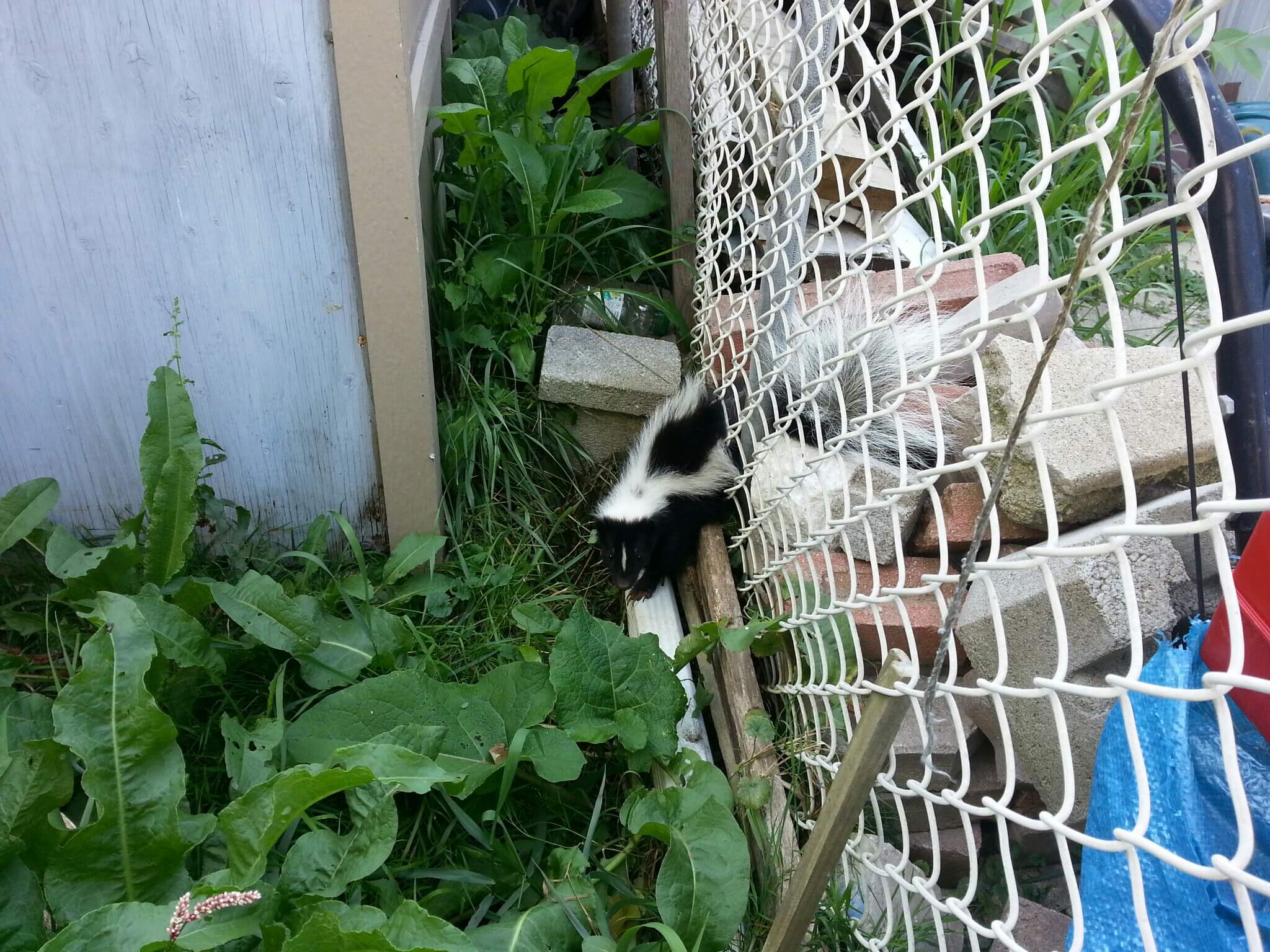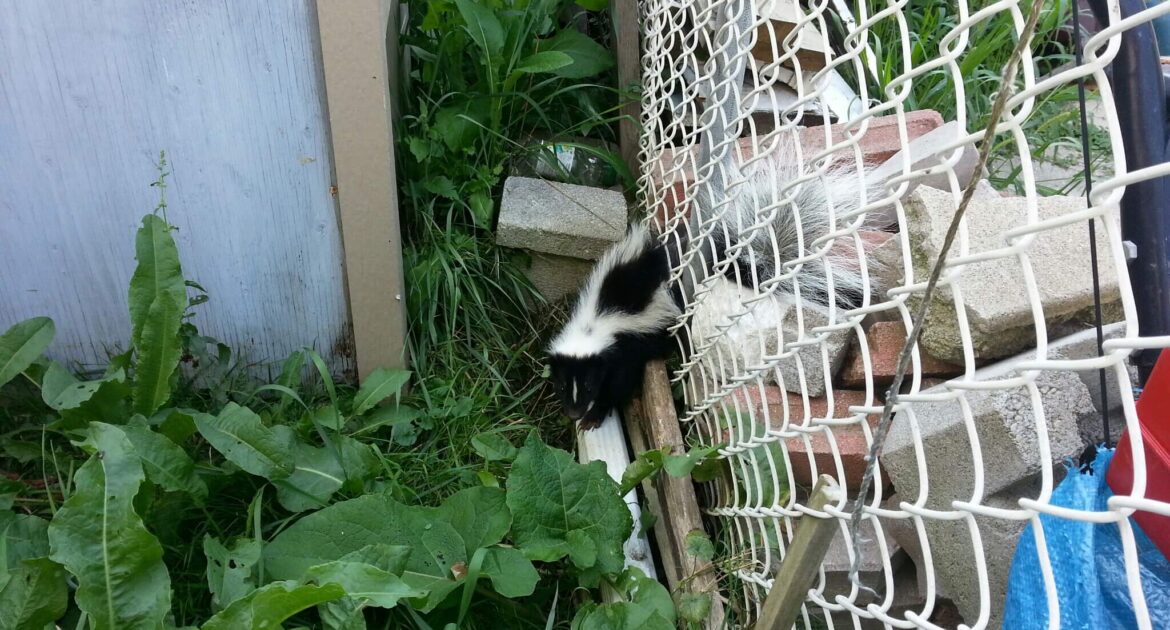While some homeowners view skunks through a beneficial lens, the way these critters punctuate their presence with an obnoxious musk means they aren’t typically welcome on most lawns. To best keep skunks at bay, it helps to know what attracts them to your yard and what preventative measures you can take to keep your property pest-free.
What Do Skunks Eat?
Skunks mostly eat insects. Specifically, they prefer to munch on bees, beetles, crickets, and grasshoppers. During spring and summer, when these bugs are plentiful, you may find a skunk digging small, conical holes in your yard as part of their hunt. Some gardeners appreciate this work, as it prevents them from having to take on the work of killing their garden’s grubs themselves.
As temperatures drop and fall and winter arrive, skunks alter their diet to increase their food intake. That means birdseed, fruit, nuts, and pet food are all likely targets. In rare situations, they can also go after small mammals, such as mice, rabbits, and rats. If they’re available, skunks can dine on chicken eggs, too.
Where Do Skunks Commonly Nest?
Skunks tend to prefer nightlife. They also have a strong distaste for traveling long distances, so they’ll try to establish a den that provides everything they need: food, water, and protection.
This often leads them to enclosed places near a house, such as under decks or porches. If they can find their way into your home, they may take up residence in a basement or crawl space, as well.
It’s necessary to take quick action should you believe a skunk has moved in. Usually, they only set up a den when they’re ready to give birth. If you don’t remove them in time, you can end up with an entire family living near or inside your home.
Can You Prevent Skunks From Living in Your Yard?
Generally, it’s better to be in the position of preventing skunks from moving in than removing skunks from your home. To do this, you’ll need to understand what the skunks are looking for and what makes your property attractive.
As we stated, skunks are looking for a home base from which they can easily reach food and water while also staying protected when they’re within their den’s confines. So, it helps to remove or hide each of these components of a good skunk home to keep them from your yard.
For food, make sure to securely seal all outside garbage cans. Tight-fitting lids or contraptions that make it difficult to knock the cans over can help mitigate the odds of your garbage becoming a food source.
If you store your pet food outside, make sure to move it inside or otherwise out of reach before nightfall. If you have a bird feeder, try to keep it out of reach for creatures that don’t fly.
Regarding protection, skunks prefer dark spaces where they aren’t likely to be found. Trimming overgrown shrubbery and removing wood or rock piles can make your yard more open, thus more dangerous for wildlife.
Should you discover that skunks have moved in under a porch, try some gentle, humane harassment. Some examples include playing the radio loudly near the den, turning on bright lights, or keeping ammonia-soaked clothing near their nest. To reduce the stress of the animals and keep the baby skunks and adults together, you should only install a one-way trap door once you are sure the entire family has left.
How Can Skedaddle Humane Wildlife Control Help?
Of course, prevention isn’t always effective, and skunks may find themselves a den in areas of your property you never considered. When you need help with removal, you’ll need the help of professionals.
For humane skunk removal in Madison, reach out to our Skedaddle team for help. We can remove skunks from your home safely and effectively, as well as work with you to craft a treatment plan that keeps them from coming back.




